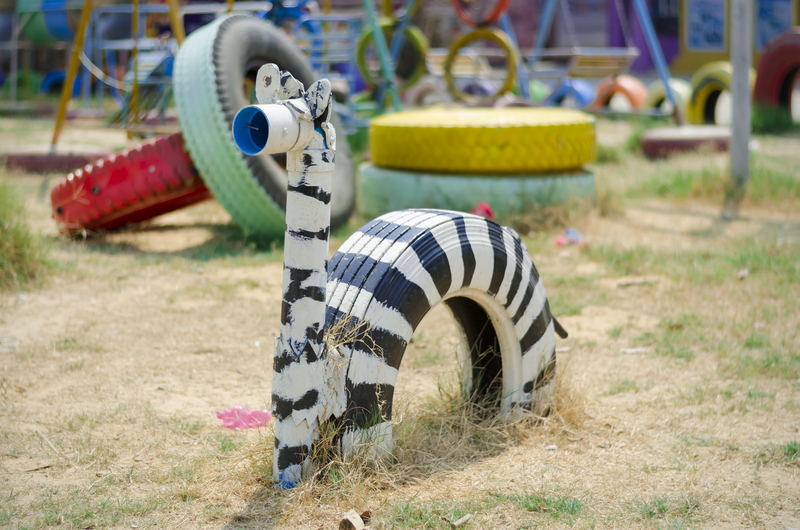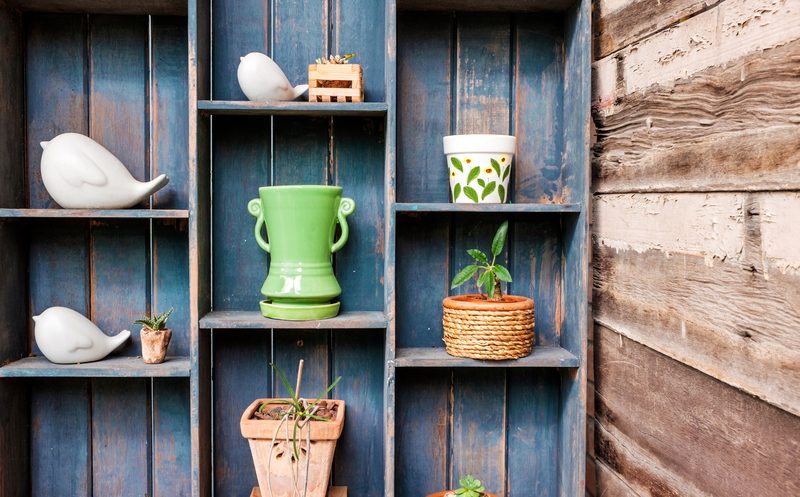The Art of Disposing Plant Pots Responsibly
Gardening is a rewarding and sustainable practice, but it often leads to the accumulation of plastic and other types of plant pots. If you are passionate about plants and the planet, it is essential to consider how to responsibly handle these containers at the end of their life cycle. In this comprehensive guide, we explore eco-friendly disposal options for plant pots, creative reuse ideas, and best practices for minimizing waste in your gardening journey.
Why Responsible Plant Pot Disposal Matters
Plant pots may seem like a minor waste item, but their environmental impact can be significant. Millions of plastic, ceramic, terracotta, and biodegradable plant pots are discarded every year. Understanding how to dispose of plant pots responsibly helps to prevent landfill overflow, reduce pollution, and conserve valuable resources.
- Plastic plant pots can take hundreds of years to decompose, often ending up in landfills or waterways.
- Ceramic and terracotta pots, while natural, can still take decades to break down if not managed properly.
- Improperly discarded pots can leach chemicals, harm wildlife, and burden waste management systems.
Choosing sustainable practices to dispose of old plant pots is a fundamental step towards greener gardening.

Types of Plant Pots and Their Environmental Footprints
Every plant pot has a different environmental profile. Let's look at the main types and their implications:
Plastic Plant Pots
- Lightweight and widely used, but not all plastics are recyclable in curbside programs.
- Made from petroleum, contributing to fossil fuel consumption.
- Can become brittle and break, creating microplastics that contaminate soil and water.
Terracotta and Ceramic Pots
- Durable and attractive, often reusable.
- Production involves energy-intensive kiln firing.
- Non-biodegradable but chemically inert--won't leach toxins, but don't compost or recycle easily.
Biodegradable or Compostable Pots
- Made from materials like coir, peat, or compressed paper.
- Break down naturally in compost or soil, releasing nutrients.
- Not suitable for every plant or climate but highly sustainable.
How to Dispose of Plant Pots Responsibly
Disposing of unwanted plant pots is more than tossing them in the trash. There are various responsible methods for disposing of plant pots that benefit the environment, local community, and your own gardening efforts.
- Recycling
- Reusing
- Upcycling
- Donating
- Proper landfill practices (when no other option is available)
1. Recycling Plastic Plant Pots
Recycling is an excellent option for plastic plant pot disposal, but not all plastics are accepted everywhere. Here's how to ensure your plastic pots get a second life:
- Check the recycling symbol; look for numbers #2 (HDPE) or #5 (PP), which are most commonly accepted.
- Clean pots thoroughly--rinse off soil, pesticides, and plant debris.
- Contact your municipal recycling center to confirm they accept garden plastics.
- Find nearby community collection programs or garden centers like Home Depot or Lowe's that often accept plastic pots for recycling.
Remember: Compostable and biodegradable pots are not suitable for plastic recycling streams.
2. Reusing and Repurposing Plant Pots
Before discarding your pots, consider their potential for reuse:
- Use them to propagate cuttings or start new seedlings year after year.
- Offer surplus pots to local community gardens, schools, or neighbors--many are happy to reuse these items.
- Store them for future gardening projects or to temporarily house gifted plants.
3. Upcycling: Creative Ways to Give Plant Pots New Life
Transforming old plant pots into something new is a form of art, and a fun way to reduce waste. Here are popular upcycling ideas for old plant pots:
- Paint, decorate, and use as desk organizers or craft storage containers.
- Build fairy gardens, bird feeders, or wind chimes with small or broken pots.
- Stack or arrange pots for vertical gardens or decorative landscaping features.
- Use cracked terracotta shards as drainage material in garden beds or in mosaic art projects.
4. Donating Unwanted Plant Pots
Many organizations and individuals will gladly accept clean, gently used plant pots. Consider these options:
- Local gardening clubs and plant swap groups.
- Community or school gardens seeking affordable supplies.
- Charities, shelters, or social enterprises with horticultural programs.
- Post on neighborhood message boards like Nextdoor or social media groups.
What to Do With Broken or Unusable Plant Pots
Completely unusable plant pots still don't belong in the trash if avoidable.
- As mentioned, terracotta shards can go in garden soil or potted plant drainage layers.
- Ceramic and terracotta pieces are great for creating pathways, mosaics, or as mulch in garden beds.
- Plastic pieces should never be left outdoors due to microplastic pollution risk--seal them in a bag if you must send to landfill.
Tips for Minimizing Plant Pot Waste in the Future
Disposal is important, but so is reducing overall waste. Adopt these habits for a more sustainable approach to plant pot management:
Choose Biodegradable Pots
- Opt for coir, compostable paper, or peat pots for starting seedlings or temporary plant homes.
- These can be planted directly into the ground, eliminating extra waste entirely.
Support Pot Return Programs
- Buy from nurseries or retailers with return, reuse, or recycling programs for plant containers.
- Bring back used pots instead of collecting new ones.
Purchase in Bulk or Seek Pot-Free Sales
- Buy bare-root plants or those in shared trays to cut down on single-use containers.
- Request minimal packaging when ordering online.
Repair and Maintain Pots
- Patch cracked pots with waterproof glue or tape to prolong their life.
- Store pots indoors or under cover to prevent weather damage.
Frequently Asked Questions About Plant Pot Disposal
Can I recycle plant pots in my curbside bin?
It depends on your local program! Always check with your municipal recycling or waste management body. Many programs accept certain types of plastic, usually #2 (HDPE) and #5 (PP), but not all garden plastics are suitable. Terracotta and ceramic are typically not accepted in regular recycling streams.
Are biodegradable plant pots really compostable?
Most biodegradable and compostable pots (like peat, coir, and paper) will break down in a home compost pile or directly in the soil. However, it's important to confirm product details--some "biodegradable" plastics need special industrial composting facilities.
Where can I donate unwanted plant pots?
Contact local community gardens, schools, garden clubs, or charities. You can also post online in gardening forums or neighborhood groups, where fellow plant lovers may be seeking free or low-cost pots.
What if my plant pots are severely damaged?
Terracotta and ceramic can be crushed and used in the garden or for art projects. Broken plastics should be securely bagged before disposal to avoid environmental contamination, but do your best to minimize sending materials to landfill.
Are there alternatives to plastic plant pots?
Absolutely! Biodegradable pots, coir, peat, and fabric grow bags are all sustainable options. Ceramic, terracotta, and recycled pots can last years with proper care.

Conclusion: Cultivating a Greener Future With Responsible Plant Pot Disposal
The art of disposing plant pots responsibly is as much about creativity and community as it is about environmental stewardship. By recycling, reusing, donating, and choosing sustainable alternatives, every gardener can help minimize waste and protect our planet for future generations.
Let's nurture not only our plants, but also the ecosystems they are part of. The next time you are faced with a pile of empty plant pots, think beyond the trash--and embrace the opportunities for responsible disposal and sustainable gardening!
Summary: Key Steps for Responsible Plant Pot Disposal
- Check for recycling programs at local garden centers and recycling facilities.
- Clean and donate usable pots to community projects or neighbors.
- Upcycle and get creative with broken or surplus pots--turn them into art, tools, or garden features!
- Opt for biodegradable or compostable pots for future plantings.
- Avoid purchasing new pots when possible--choose reused or sustainable options.
Disposing of plant pots responsibly is a small action with big impact. Let's make it a habit, and inspire others to do the same!